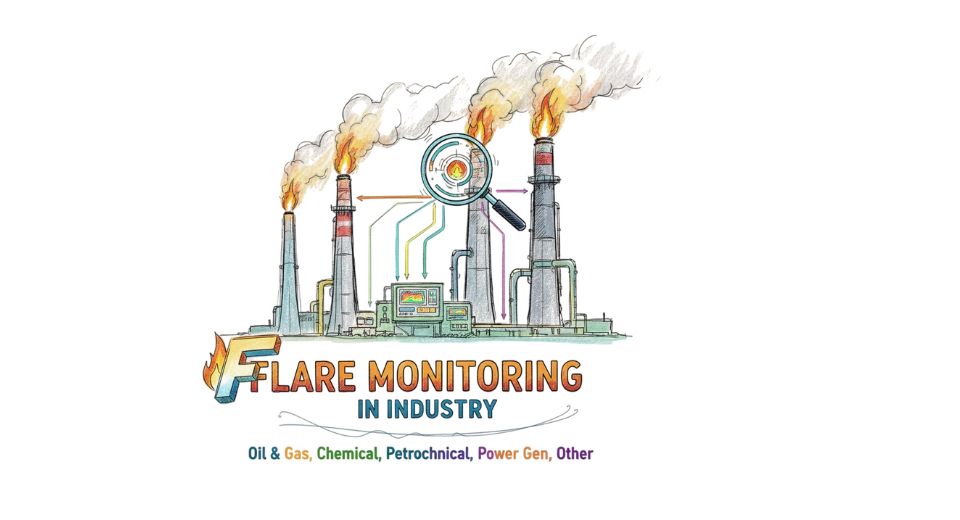
Oct 30, 2025

The global flare monitoring market, as it is characterized by Metastat Insight, stands at the forefront of the argument surrounding industrial transparency, environmental stewardship, and efficiency in energy use. Throughout oil refineries, petrochemical plants, and gas processing plants, greater regard for waste minimization and emissions reduction has moved flare monitoring into the position of an enforcement requirement and a strategic operations tool. What started out as just a compliance regime has come to represent a regime that mirrors the way industries treat their environmental impact and business discipline. The subject matter is worth covering because the world is increasingly trending towards cleaner processes, and strict oversight of flaring activity is a public determinant of responsibility to industrial sustainability.
Market Context: The Shifting Nature of Industrial Emission Regime
In industrial operations, flaring has been a routine way of disposing of excess gas in a safe manner. But with increasing environmental consciousness becoming a part of boardroom discourse, dependence on manual or legacy surveillance techniques has compromised accuracy and accountability. Plants are today subjected to greater scrutiny not only by regulatory bodies but also by shareholders and communities clamoring for tangible evidence of emission mitigation. This added pressure necessitated systems that provide both accuracy and transparency.
The world flare monitoring market answers these new demands with superior technologies that can watch and observe in real time. These systems enable operators to measure combustion efficiency, identify anomalies, and accurately measure the levels of emissions. With stringent environmental laws, this feature makes flare monitoring a critical part of operational dependability and business obligation.
How It Works and Why It Has Value
Flare monitoring systems operate through the collection of optical, heat, or sound data to identify flare activity and operation. Through sensors, cameras, and analytics platforms, the technology gives real-time information regarding the combustion process. The harvested information is used to ensure that gas flares burn efficiently and do not emit unburned hydrocarbons into the air.
Its worth is not limited to compliance. By displaying inefficiencies within flare systems, operators are able to lower fuel loss, avoid equipment wear and tear, and maximize maintenance timing. Ongoing monitoring offers process stability and safety, especially for large facilities where failed flares can generate operational or reputation risk. Integration with digital platforms is also possible, allowing automated reporting and data-driven decisions, where industries are able to uphold environmental integrity and optimize operational economics.
Growth Narrative and Technological Progress
Implementation of flare monitoring technology started quietly in refineries and gas plants trying to comply with initial environmental standards. With the passage of time, improvements in imaging, sensor reliability, and computer-based analysis propel these units from backroom units to core equipment of industrial process control. The transition from manual observation to mechanized, intelligent monitoring was a paradigm shift in managing emissions in industries.
The recent advances highlighted intelligent analytics to support predictive insight as compared to mere detection. Connectivity with cloud infrastructure and industrial IoT platforms has placed flare monitoring within larger digital transformation initiatives. Machine learning–supported analysis and adaptive calibration were among the technologies that further increased reliability. This creates a market that continues to self-verify through accuracy, connectivity, and sustainability-led innovation.
Regional and Global Trends
Adoption is most effective in countries with robust environmental regulations and mature industrial infrastructures. These countries have been pioneer drivers for early uptake of high-performance monitoring technologies, with some leading the way in establishing standards for best practices in flare management. Corporate sustainability policies and strict emission standards have aided mass implementation.
Emerging markets, on their part, are gaining increasing traction as green policy implementation and infrastructure development grow stricter. Growing industrialization coupled with global collaboration towards emissions reduction has created new windows of adoption. As businesses and governments align towards sustainability goals, flare monitoring is set to pick up pace in emerging industrial centers where modernization is gaining pace.
Challenges and Opportunities
The industry has some challenges, such as the expense of installing sophisticated systems, integrating with existing infrastructure, and regional heterogeneity of regulation. Small operators cannot afford to bear capital expenditures, particularly in cases where budgets are constrained to run the company. Where non-uniform environmental regulation is permitted within certain regions, there is less incentive to embrace new monitor solutions.
Opportunities still grow, however
The move to digital automation and predictive maintenance is a natural fit for flare monitoring systems. Advances in sensor technology, artificial intelligence-based analysis, and networked control platforms are progressively lowering the levels of complexity. Convergence between industrial automation companies and monitoring solution providers is producing systems that are simpler to deploy and service. With industries moving towards carbon accountability and transparency in reporting, expectations for valid flare data should increase, leaving scope for further growth. Why It Matters Now
The focus on sustainability, emissions transparency, and corporate responsibility has made flare monitoring an integral aspect of contemporary industrial policy. It aligns with international imaginations of cleaner production, intelligent energy management, and lower greenhouse gas emissions. Corporations and governments are moving towards policies and actions that focus on verifiable emissions reduction first, and thus monitoring is no longer business as usual but a public statement of commitment to international environmental objectives.
The global flare monitoring market offered by Metastat Insight does not only take a technological niche, it takes hold of the constant drift of industrial activity towards responsibility, efficiency, and openness. While industries realign to address environmental requirements and mine digital smarts, flare monitoring is at once an enforcement mechanism and a measure of forward motion. Its constant evolution mirrors not merely the industrialization of this era but a step towards an open, cleaner industrial future.
Drop us an email at:
Call us on:
+1 214 613 5758
+91 73850 57479